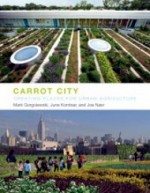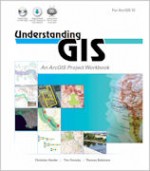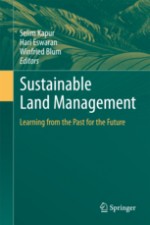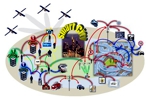
Friday, September 30th, 2011
Urban design is increasingly adopting the idea of food production within city spaces. Carrot City looks at how we imagine a city will look if agricultural production rises. New knowledge networks, changes in urban home and building design, vertical agriculture and the various components for growing food are all included. As changing climate, population increase

Wednesday, September 21st, 2011
Planning and mainly spatial planning deals with the spatial dimension of development. It is concerned not only with architecture but also with the place where people live and work. Spatial planning is one of the major challenges facing Europe. In the future it won’t be possible to solve planning problems of regional development without access to spatial knowledge. Good

Monday, September 12th, 2011
Many books present GIS in terms of technology alone, fewer attempt to embrace real problems and link concepts to exercises that explain how all the dots connect when using GIS. Understanding GIS: An ArcGIS Project Workbook benefits from the wealth of experience authors Christian Harder, Tim Ormsby and Thomas Balstrøm bring to the book, providing the guidance and explorations

Sunday, September 11th, 2011
GIS has its roots in what a geographer or cartographer might call “small-scale” information, information primarily related to issues of land management and the environment. In the early days, there were many competing acronyms for what is now known as GIS, such as Land Information Systems (LIS), and Facility Information or Facility Management Systems (FMS).

Tuesday, August 30th, 2011
Sustainable tourism is an important aspect of many European countries and regions. It plays a crucial role in parks, protected areas and coastal zones. To be able to guarantee tourism activities and development in regions, public servants have to be trained about potential influence of investment in tourism on the environment. Nature protection and support

Sunday, August 28th, 2011
The book Sustainable Land Management: Learning From the Past for the Future provides a summary for ‘Anthroscpaes’ – those landscapes impacted by humans. These landscapes are affected by culture and history, thus, the book attempts to examine sustainability through space and time, recognising the fluid nature of landscapes. It includes a compendium of topics, combined

Wednesday, August 17th, 2011
The concept of geolocation privacy is now receiving a good deal of attention in the United States. For example, nine bills are being considered on Capitol Hill that would would regulate the collection, use and/or transfer of geolocation information. Many of the bills include geolocation as part of larger privacy bills and treat an individual’s

Tuesday, August 16th, 2011
Not that long ago, I considered “web mapping” an advanced topic, best left to be taught in a senior GIS course. While that can still be the case, depending on how it is defined, the fact is that creating a map of your own data on a web page has become something anyone can do

Monday, August 15th, 2011
Luxembourg based AES Astra emerged in the 1980’s during a critical time when television was expanding and re-inventing itself as a powerful communication medium, and satellite television was new. The growth of Astra was aligned with the development of global perspectives on many fronts. Global collaboration, worldwide news, high definition television along with mobile viewing

Tuesday, August 9th, 2011
Scientists of the TU Darmstadt are working on the Smart City. Smart phones, equipped with numerous sensors, significantly simplify for their owners the organization of several aspects of their lives. But this is only the beginning; scientists of Darmstadt envision an entire smart city in which all sensor-equipped devices are interlinked in an intelligent manner.